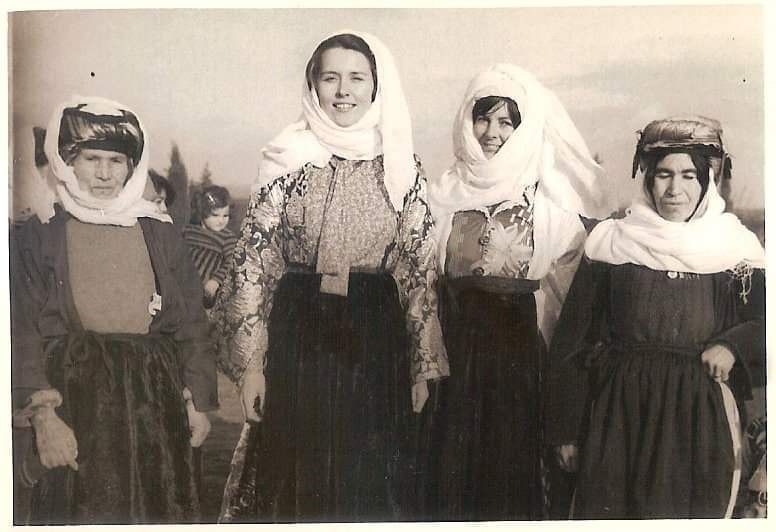Women's and men's Kurdish clothes have chronologically preserved the culture and customs of this nation from ancient times up to now. Although our folklore has been damaged a great deal and has been under the influence of capitalism and modernism, however, we can still see that this cultural heritage is still shining in different Kurdish regions. When one travels through the Kurdistan areas, they can see hundreds of men's and women's clothing styles with special features of that particular area on them. Here, we will discuss the special features of women's Kurdish clothes in Kobane and their beauty. The creative colors and patterns used for these styles show the Kurdish nature and folklore.
In most of the villages near Kobane, old women still wear these clothes every day and they do not feel embarrassed or ashamed of these dresses. There are even a lot of proverbs and expressions about women's Kurdish clothes that can be analyzed. "Mother's clothes are daughter's clothes"; since mothers are the center of the family and they are the main people who protect the Kurdish culture; thus, their daughters will follow them in style and manner. One can find tens of such proverbs about women's clothes.
In addition to this, women's clothes have distinct features that could be mentioned here. National clothes, Political Party uniforms, mourning styles, sleeping gowns, working clothes, etc. The clothes can vary based on the women's age. Here, we can divide these clothes into three groups based on three generations' preferences which include: little girls (kids), young girls, and old and elderly women.
Little Girls Clothes: In this part, there are distinct features that can be said they are representative of older women's clothes. The dresses are made with Faqyana (Sorani), a loose blouse is worn underneath the dress, and a little skirt is covered with colorful Khilchs.
Young Girls Clothes: The young girls wear longer dresses and khaftanis. They also wear something called Eishqur which looks like a crown but it is not a crown. They also wear colorful Khilchs. They wrap a golden Pshtwen around it. What would distinct a married woman from a single one was that the married women would put a Malas cloth under their Eshqur on their head and shoulders, however, the single women would not have to wear it.
Old and Elderly Women's Clothes: As women grow older gradually, their clothes styles will change too. The women wear white or sometimes black Khaftani, their dresses usually are chosen among gray and darker colors, they also wear a shield made of leather that covers the front part of their dresses. One of the most significant features of this age is the colors, that is, they do not wear red, green, or yellow dresses. They only would wear these colors of clothes for ceremonies and parties. In addition, women wear Kofi over their heads even in their homes. Not wearing a Kofi was considered a shameful act for old women.
However, nowadays, these cultures are not popular among people for everyday life and they wear these dresses for weddings and ceremonies. This culture has been preserved among old women even now. These classifications discussed above show the distinctions. Perhaps, these features are different for other people or cultures.
…………………
Note: According to the regional sources, the picture used for this article above, was taken in 1977 in Mezre village near Kobane. From the left, a woman named Hadla Sorakly, Mohammad Ali Sorakly's wife, and on the right Fahima Sorakly, their daughter, can be seen. The women standing between them are foreign guests from America,








